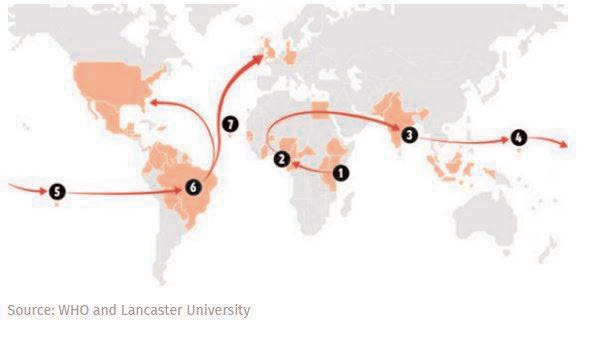
“The 100 Indian-based companies surveyed for the study have made an aggregate $15.3 billion investment in their U.S. operations. That, in turn, has created 91,000 jobs in the U.S., which by any measure is a substantial contribution to the American economy. Those jobs are scattered throughout the country. In fact, the survey found that Indian companies have a presence in all 50 states.”
“In the U.S., IT comprises 40 percent of Indian-company investment, according to the survey. The rest is highly diversified. Life sciences, pharmaceuticals and health care companies make up 14 percent of Indian investment here. Another 14 percent are manufacturers and mining companies. 16 percent offer financial, engineering, construction and entertainment services. The remainder is companies in the automotive, energy, hospitality and food businesses.”
“The exchange is good for both nations and should be encouraged. The U.S. and India have much in common. They are the largest democracies in the world. They are also economic powerhouses that are helping each other grow in a dynamic global marketplace. We have a stake in each other’s economic future – and that future is very bright.”
A remarkable story that has often escaped public attention in the overall context of the vibrant India-U.S. relationship is that Indian companies have been pouring investment dollars into businesses in the U.S. and creating tens of thousands of American jobs. A new report from the Confederation of Indian Industry and the accounting firm Grant Thornton reveals that not only is Indian investment in the U.S. large, it’s also extremely widespread and clearly growing.
The 100 Indian-based companies surveyed for the study have made an aggregate $15.3 billion investment in their U.S. operations. That, in turn, has created 91,000 jobs in the U.S., which by any measure is a substantial contribution to the American economy. Those jobs are scattered throughout the country. In fact, the survey found that Indian companies have a presence in all 50 states.
The U.S. isn’t just a favored destination for the time being; it is likely to remain attractive for Indian investors for years. When asked if they plan to invest in the U.S. in the next five years, 84.5 percent of the Indian companies surveyed said yes. Only 4 percent said no. Asked if they plan to hire more employees locally in the U.S. over the next five years, 90 percent of the companies answered in the affirmative.
The survey also challenges the greatest stereotype about the kinds of Indian companies in the U.S. They are not all information technology companies. Far from it. In the U.S., IT comprises 40 percent of Indian-company investment, according to the survey. The rest is highly diversified. Life sciences, pharmaceuticals and health care companies make up 14 percent of Indian investment here. Another 14 percent are manufacturers and mining companies. 16 percent offer financial, engineering, construction and entertainment services. The remainder is companies in the automotive, energy, hospitality and food businesses.
The average investment received from Indian companies per state is substantial: $433 million. The top five states with the highest volume of investment – $1 billion or more – are Texas ($3.85 billion), Pennsylvania ($3.56 billion), Minnesota ($1.8 billion), New York ($1.01 billion) and New Jersey ($1 billion).
In terms of employment generated by Indian companies, the top five states are New Jersey and California, each with about 9,000 jobs, Texas (6,000 jobs), Illinois (5,000 jobs) and New York (4,000 jobs).
All of these numbers have been rising steadily, a sign that the U.S. market is among the strongest investment destinations in the world. These substantial investments are also a testament to the trust and openness that India and the U.S. enjoy both at the people-to-people and government-to-government levels. According to Select USA, India is now the fourth-fastest growing source of foreign direct investment into the United States. The significant and growing contributions of Indian investments in the U.S. remain a vital component of the bilateral relationship.
American firms, of course, have long been major investors in India. Foreign direct investment by U.S. firms in India has been more than $1 billion a year. Efforts by Prime Minister Narendra Modi to make economic growth a hallmark of his administration have accelerated U.S. investment there.
India has been lowering barriers to investment and encouraging business expansion. For example, the Indian government has over the past year raised limits on foreign investment in sectors such as insurance, medical devices, railways and defense. This will no doubt provide myriad opportunities for U.S. companies to increase their presence in India and will strengthen Indian companies so that they can enlarge their footprint in the U.S.
The exchange is good for both nations and should be encouraged. The U.S. and India have much in common. They are the largest democracies in the world. They are also economic powerhouses that are helping each other grow in a dynamic global marketplace. We have a stake in each other’s economic future – and that future is very bright.
By Ambassador Arun K. Singh (The author is India’s ambassador to the U.S.)





Be the first to comment